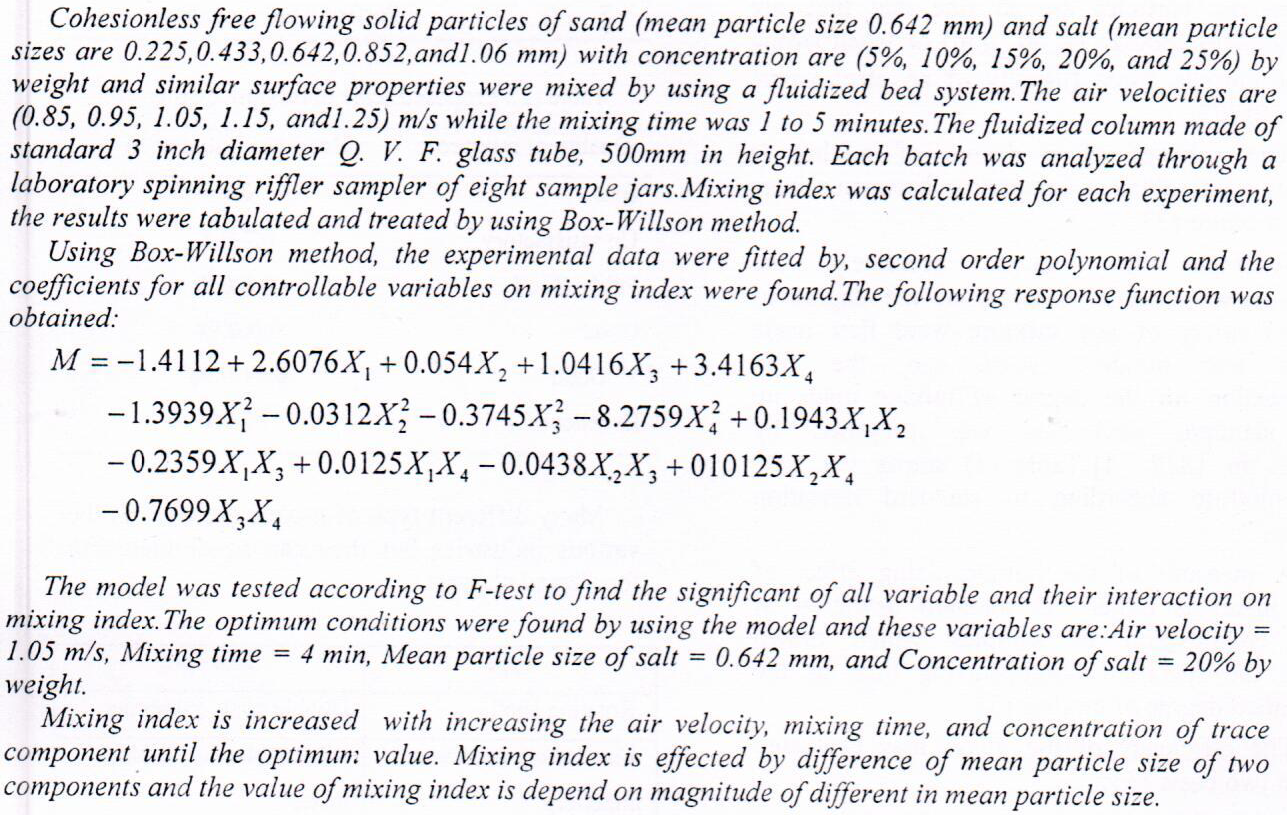
The tunnel’s stability during construction is a very important matter. Some methods have been proposed for stability evaluation, but the hazard warning levels (HWLs) are more applicable among these methods. Despite monitoring and applying HWLs, several collapses in Shibli twin tunnels in Iran have cast doubts on the accuracy of this criterion in the presence of water. In this study, the critical strains under different water contents were measured through uniaxial compressive strength tests on 11 different shale and marl samples. A comparison of laboratory tests and numerical results shows that the influence of the moisture content on the critical strain is negligible. In addition, the results show that there is no dir
... Show More (1)
(1)
 (22)
(22)
 (20)
(20)
The importance of specifying proper aggregate grading for achieving satisfactory performance in pavement applications has long been recognized. To improve the specifications for superior performance, there is a need to understand how differences in aggregate gradations within the acceptable limits may affect unbound aggregate base behavior. The effects of gradation on strength, modulus, and deformation characteristics of high-quality crushed rock base materials are described here. Two crushed rock types commonly used in constructing heavy-duty granular base layers in the State of Victoria, Australia, with three different gradations each were used in this study. The gradations used represent the lower, medium, and upper gradation li
... Show More (4)
(4)
 (3)
(3)
 (1)
(1)
 (33)
(33)
 (32)
(32)
 (13)
(13)
 (9)
(9)
The materials of soil were affected by multi reasons; such as human activities, floods, tidal waves, ... etc. The change of the soil contents could be measured through different indexes; such as electric conductivities, salinity, concentration of the heavy elements, and concentration of essential elements ... etc. The land cover is affected by natural influences, like tidal energy, which plays a negative role in the salinization of land adjacent to the coasts, causing a problem for soils in all its details represented in changing of the dissolved elements in soil. One of the most important natural factors that cause soil salinity is human activity in all its forms, and one of the most important causes of salinity is the phenomenon o
... Show MoreBackground: The microhardness of a composite resin is a vital parameter that is used to determine its clinical behavior. Measuring the microhardness of a composite resin has been used as an indirect method to assess its degree of conversion and extent of polymerization. The purpose of this in vitro study was to evaluate the effect of three curing distances (0, 2, and 4 mm) on the microhardness of the top and bottom surfaces of three types of flowable bulk-fill composite resins (smart dentin replacement, Opus bulk fill flow, and Tetric N). Material and method: Sixty-three specimens from the three types of composite resins (n=21) were fabricated using Teflon mold with a 4mm depth and a 5 mm internal diameter and cured for 20 seconds. For e
... Show More (2)
(2)
 (1)
(1)
Al-Si alloys which are widely used in engineering applications due to their outstanding properties can be modified for more enhancements in their properties. Current work investigated the ability of these alloys to be modified by casting them through the addition of nanoparticles. So, Multi-wall carbon nanotubes (CNT) and titanium carbide ceramic particles (TIC) with size of (20 nm) were added with different amounts started from (0.5 up to 3%) weight to cast alloy A356 that was considered to be the base metal matrix, then stirred with different speeds of (270, 800, 1500, 2150) rpm at 520 °C for one minute. The results showed change in microstructure’ shape of the casted alloys from the dendritic to spherical gra
... Show MoreBackground: Polymeric composites have been widely used as dental restorative materials. A fundamental knowledge and understanding of the behavior of these materials in the oral cavity is essential to improve their properties and performance. The goal of this study was to measure water sorption of four composite resins containing different filler and resin matrix contents. Materials and method: Resin composite specimens giomer (Beautifil II) Filtek™ P90, Filtek™ Z350 XT, and Tetric N Ceram were prepared in a cylindrical mould of 3mm thickness and 6mm diameter (n=10) and light cured . All specimens placed in silica-gel desiccators at 37˚C for seven days, a constant weight was obtained. All samples were immersed in deionized distill
... Show More